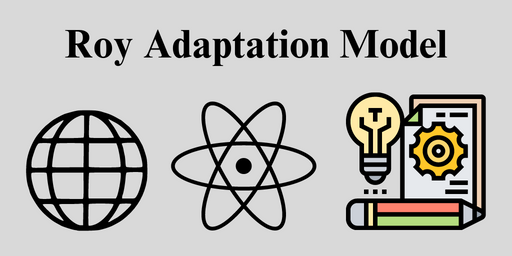What Roy Adaptation Model In Health Care. The Roy Adaptation Model in healthcare is a conceptual framework that views individuals as adaptive systems, continually interacting with their environment and responding to stimuli through various coping mechanisms to maintain physiological, psychological, and social well-being. It helps nurses assess, diagnose, and plan care for individuals by understanding their adaptive behaviors and the stimuli that influence them.
What is Roy Adaptation Model In Health Care
The Roy Adaptation Model in healthcare is a conceptual framework that views individuals as adaptive systems, continually interacting with their environment and responding to stimuli through various coping mechanisms to maintain physiological, psychological, and social well-being. It helps nurses assess, diagnose, and plan care for individuals by understanding their adaptive behaviors and the stimuli that influence them.
Roy Adaptation Model Overview
The Callista Roy Adaptation Model is a nursing theory developed by Callista Roy that conceptualizes individuals as holistic adaptive systems continuously interacting with their environment. The model focuses on how individuals adapt to various stimuli from their environment, aiming to promote health and well-being through effective adaptation.
Key Components of the Roy Adaptation Model
- Holistic Adaptive System:
- Person as an Adaptive System: According to Roy, a person is a holistic adaptive system that interacts with the environment. This system includes interrelated parts functioning together to achieve a purpose.
- Inputs: Stimuli received from the environment, classified as focal, contextual, or residual.
- Focal Stimuli: The primary stimuli that are immediately confronting the person.
- Contextual Stimuli: All other stimuli in the environment that impact the focal stimuli.
- Residual Stimuli: Stimuli whose effects are unclear or not well understood.
- Control or Regulators of the Adaptation System:
- Regulator and Cognator Subsystems: These are the two main coping mechanisms that help individuals adapt to changes. The regulator subsystem responds automatically to stimuli, while the cognator subsystem uses cognitive processes to manage adaptation.
- Perception: Links the regulator and cognator subsystems, facilitating responses to stimuli.
- Outputs: The responses or behaviors resulting from the activity of the regulator and cognator subsystems. These behaviors are categorized into four adaptive modes: physiological, self-concept, role function, and interdependence.
- Goals of the Adaptation Model:
- Promotion of Adaptation: The primary goal of nursing within the Roy Adaptation Model is to promote adaptation in each of the four modes. This includes improving health, quality of life, and ensuring dignity in dying.
- Health Definition: Roy defines health as a state and process of becoming an integrated and whole person, reflecting the adaptation of the individual’s systems.
- Nursing Interventions:
- Management of Stimuli: Nursing interventions are conceptualized as managing or manipulating stimuli to facilitate adaptation. This involves addressing focal, contextual, and residual stimuli to improve adaptive responses.
Elements of the Model’s Assumptions
- Scientific Assumptions: Derived from systems theory and adaptation level theory, focusing on how systems interact and adapt.
- Philosophical Assumptions: Related to humanism, emphasizing the person’s capacity for growth and adaptation.
Characteristics of the Roy Model
- Empirical Studies: Various studies have used the Roy Adaptation Model as a framework, with variability in how clearly the model’s concepts are applied. Some studies developed data collection instruments based on the model, while others used it as a framework for analysis.
- Meta-Analysis: Chiou (2000) conducted a meta-analysis revealing the need for further research to confirm the credibility of the model and explore its concepts, such as the interdependence mode.
Nursing Research and Roy Adaptation Model
- Research Application: Studies have linked specific concepts from the Roy Adaptation Model to research variables, such as focal, contextual, and residual stimuli, control processes, and adaptive modes.
- Examples of Studies:
- Yeh (2003) examined the relationships among social support, parenting stress, coping style, and psychological distress.
- Zhan (2000) studied cognitive adaptation processes and self-consistency in hearing-impaired elderly individuals.
- Jirovec et al. (1999) tested a urine control theory derived from the model.
Roy Model Nursing Research Designs
- Variety in Designs: Research using the Roy Adaptation Model has employed various methodologies, including cross-sectional, longitudinal, prospective, and ex-post-facto designs. Studies have used case study, single group, comparison group, exploratory, descriptive-correlational, descriptive-comparative, experimental, and quasi-experimental designs.
Roy Model and Data Collection
- Data Collection Methods: Data were collected using record reviews, observation, interviews, and both researcher-developed and standardized questionnaires (e.g., Norbeck Social Support Questionnaire, State Trait Anxiety Inventory).
- Data Analysis: Both quantitative and qualitative methods were used, including content analysis, constant comparative method for grounded theory, and qualitative frameworks for specific populations.
Contributions and Future Directions
- Contributions to Nursing Science: The Roy Adaptation Model has significantly influenced nursing science by providing a framework for understanding adaptive responses and guiding research. Studies have validated some aspects of the model and contributed to clinical practice.
- Future Research Needs: Continued research is needed to test the model’s components, explore the overlap between adaptive modes, and assess nursing interventions to promote adaptive responses.
Overall, the Roy Adaptation Model remains a valuable framework in nursing practice and research, guiding both theoretical and empirical studies in the field.
Read More:
https://nurseseducator.com/didactic-and-dialectic-teaching-rationale-for-team-based-learning/
https://nurseseducator.com/high-fidelity-simulation-use-in-nursing-education/
First NCLEX Exam Center In Pakistan From Lahore (Mall of Lahore) to the Global Nursing
Categories of Journals: W, X, Y and Z Category Journal In Nursing Education
AI in Healthcare Content Creation: A Double-Edged Sword and Scary
Social Links:
https://www.facebook.com/nurseseducator/
https://www.instagram.com/nurseseducator/

I’m extremely impressed together with your writing talents and also with
the format for your blog. Is this a paid theme or did you modify
it your self? Either way stay up the nice high quality writing,
it’s uncommon to look a great weblog like this one these days.
Snipfeed!